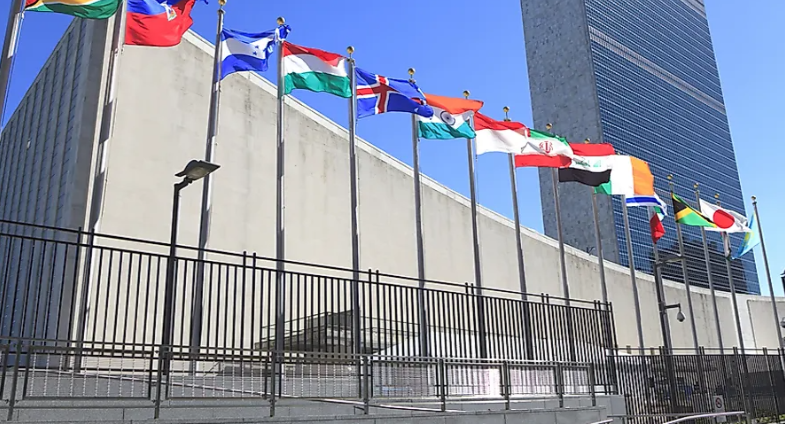UN Adopts Resolution to Bridge AI Gap with US Support

In a significant move, the U.N. General Assembly has adopted a Chinese-sponsored resolution aimed at reducing the disparity in access to artificial intelligence between developed and developing nations. Meanwhile, this resolution has garnered notable support from the United States, signaling a rare moment of cooperation between the two global powers. The main objective is to ensure that all countries, regardless of their economic status, can benefit from advancements in AI. However, this is not the only resolution on the table; it complements an earlier measure led by the U.S.
The adoption of these resolutions illustrates a mutual understanding and a collective effort to shape the future of AI technology. It also highlights the growing awareness of the need for a fair and equitable AI landscape. Therefore, this development is seen as a critical step toward global cooperation in AI governance, setting a precedent for future international collaborations.
Adoption of the Chinese-Sponsored Resolution
The U.N. General Assembly has adopted a resolution sponsored by China and supported by the United States.
This resolution calls on developed nations to bridge the gap with developing countries in access to artificial intelligence (AI).
The goal is to ensure that all countries can benefit from AI advancements.
Complementary Resolutions
The newly adopted resolution follows a previous one from March 21, led by the U.S. and co-sponsored by 123 countries, including China.
Fu Cong, China’s U.N. ambassador, stated that the two resolutions are “complementary.”
While the U.S. resolution is more general, the Chinese resolution focuses on “capacity building.”
Global Cooperation and Support
Both resolutions have shown that the U.S. and China are willing to cooperate on AI governance despite their rivalry in many areas.
This cooperation is seen as a critical step in shaping the future of AI technology.
The 193-member General Assembly adopted both resolutions by consensus, highlighting widespread global support for these initiatives.
Details of the Chinese Resolution
The Chinese resolution had more than 140 sponsors and was described as “great and far-reaching” by Fu Cong.
The resolution urges the international community to promote a fair, open, inclusive, and non-discriminatory business environment for AI.
It emphasizes the need for cooperation in AI’s design, development, and use.
U.S. Stance on the Resolution
Nate Evans, spokesperson for the U.S. mission to the United Nations, mentioned that the Chinese resolution was aligned with the U.S. vision.
The U.S. emphasized the importance of safe, secure, and trustworthy AI that respects human rights.
They worked with both developing and developed countries to strengthen the resolution’s text.
Fast-Paced AI Advancements
Fu Cong noted that AI technology is advancing rapidly and is being discussed at senior levels globally.
He expressed China’s interest in intensifying cooperation with the U.S. and other countries on AI issues.
Opposition to U.S. Sanctions
Fu Cong criticized a proposed rule by the U.S. Treasury Department that would restrict U.S. investments in China for AI, computer chips, and quantum computing.
He believes these sanctions would not be helpful to the development of AI technology and could divide the world in terms of AI standards and governance.
China called on the U.S. to lift these sanctions to foster a more inclusive business environment.
Focus on Civilian Applications of AI
Both the U.S. and Chinese resolutions emphasize the civilian uses of AI.
Fu Cong pointed out that the military dimension of AI is also crucial.
China is participating in negotiations in Geneva on controlling lethal autonomous weapons.
Promoting Economic Development and Human Rights
Both resolutions highlight the potential benefits of AI in promoting economic development and improving people’s lives.
The U.S. resolution stresses the need to protect personal data, safeguard human rights, and monitor AI for risks.
It acknowledges that AI governance is an evolving field that requires ongoing discussions.
Bridging the AI Divide
Fu Cong, who previously led the Chinese Foreign Ministry’s arms control department, emphasized the growing gap in AI technology between developed and developing countries.
The Chinese resolution calls for bridging this divide and promoting international cooperation.
The adoption of these resolutions by the U.N. General Assembly marks a significant step towards reducing global disparities in AI technology. This cooperative effort between the U.S. and China highlights the importance of international collaboration in achieving a more equitable and inclusive future for artificial intelligence. As these initiatives move forward, they set a strong precedent for continued global partnerships aimed at harnessing the potential of AI for the benefit of all countries.






